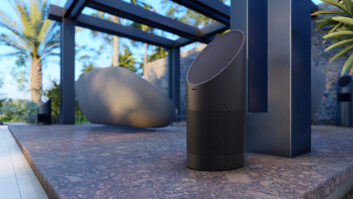Dallas – MetroPCS, the no-contract flat-rate carrier that plans to merge with T-Mobile, became the first carrier in the world to roll out so-called Rich Communications Services (RCS) to deliver such features as simultaneous voice and multimedia messaging as well as social presence.
The new 4G LTE network services, launched today under the Joyn brand, are available on the Samsung Galaxy Attain 4G with an app download from the @metro App Store and Google Play.
MetroPCS will roll out additional RCS-enabled 4G smartphones and services later this year and throughout 2013. Native smartphone support for Joyn services is due at a later date.
Chairman/CEO Roger Lindquist said the RCS technology would deliver “significant” differentiation to MetroPCS, which offers LTE service in areas reaching 97 percent of the population in its markets. The carrier has deployed LTE across its 14-market footprint using its 1.9GHz PCS and 1.7/2.1 GHz AWS spectrum.
The carrier described Joyn as integrating basic voice and messaging in a unified way with such services as instant messaging, Wi-Fi calling, video calling and content sharing. That compares with what MetroPCS called “a fragmented experience requiring the use of multiple, separate applications and log-ins in order to use enriched services and share content.”
Using Joyn’s contact presence, feature, for example, user can see how individual contacts can be reached and which multimedia capabilities — such as chat or video calling — the contact has enabled. The contact presence detects whether a person’s phone is on, if the person is in a meeting based on their calendar status, or if the person has set a status showing they are willing to accept incoming communications, a spokesman added.
With integrated video calling over LTE, users do not need a separate video-chat application such as Skype or a separate contact, the spokesman continued. RCS identifies contacts in the phone’s contact list that can accept and participate in a video call and presents that as an option to communicate, the spokesman explained.
RCS enables enriched chat, showing threaded conversations to keep track of who said what and show which people and groups are available to chat and share content. RCS also enables instant messaging and group chat without an over-the-top app.
RCS also enables sharing of video, images and files while on a call or while engaging in instant messaging or chat sessions.
With RCS’s Wi-Fi calling, users can place a regular voice call over Wi-Fi in areas with limited cellular coverage. Voice is transmitted as data over the Wi-Fi network, the spokesman said.
Lindquist spoke yesterday of his RCS plans during a financial conference call in which the company said it posted third-quarter and year-to-date gains on revenues, operating income and net income despite subscriber losses.
The gains result from a strategy launched in the second and third quarters to emphasize margin gains over aggressive subscriber-base expansion, executives said. The carrier achieved that goal in the quarter in part by moderating its marketing activities and reducing handset subsidies, which produced higher handset prices for consumers.
Revenues grew 4 percent for the quarter to $1.26 billion and for the year to date by 6 percent to $382 billion. Operating income grew 65 percent in the quarter to $292 million and for the year to date by 32 percent to $702 million. Net income grew 178 percent in the quarter to $193 million and for the year to date by 73 percent to $363 million.
During the quarter, the carrier’s subscriber base fell by 312,291, or 2 percent, to 8.99 million from a year-ago 9.15 million.
The number of LTE subscribers grew to more than 1.25 million, thanks in part to a late-third-quarter launch of a promotional $55 LTE service plans with unlimited talk, messaging and data, the company said
In the quarter, 62 percent of handsets sold were smartphones with 3G or 4G service, and 50 percent of the subscriber base was using a smartphone at the end of the quarter.
In October, T-Mobile and MetroPCS announced a merger agreement that they said will deliver the scale, additional spectrum and financial resources to expand geographic coverage, offer an improved selection of handsets and services, and compete aggressively with the nation’s larger carriers.













